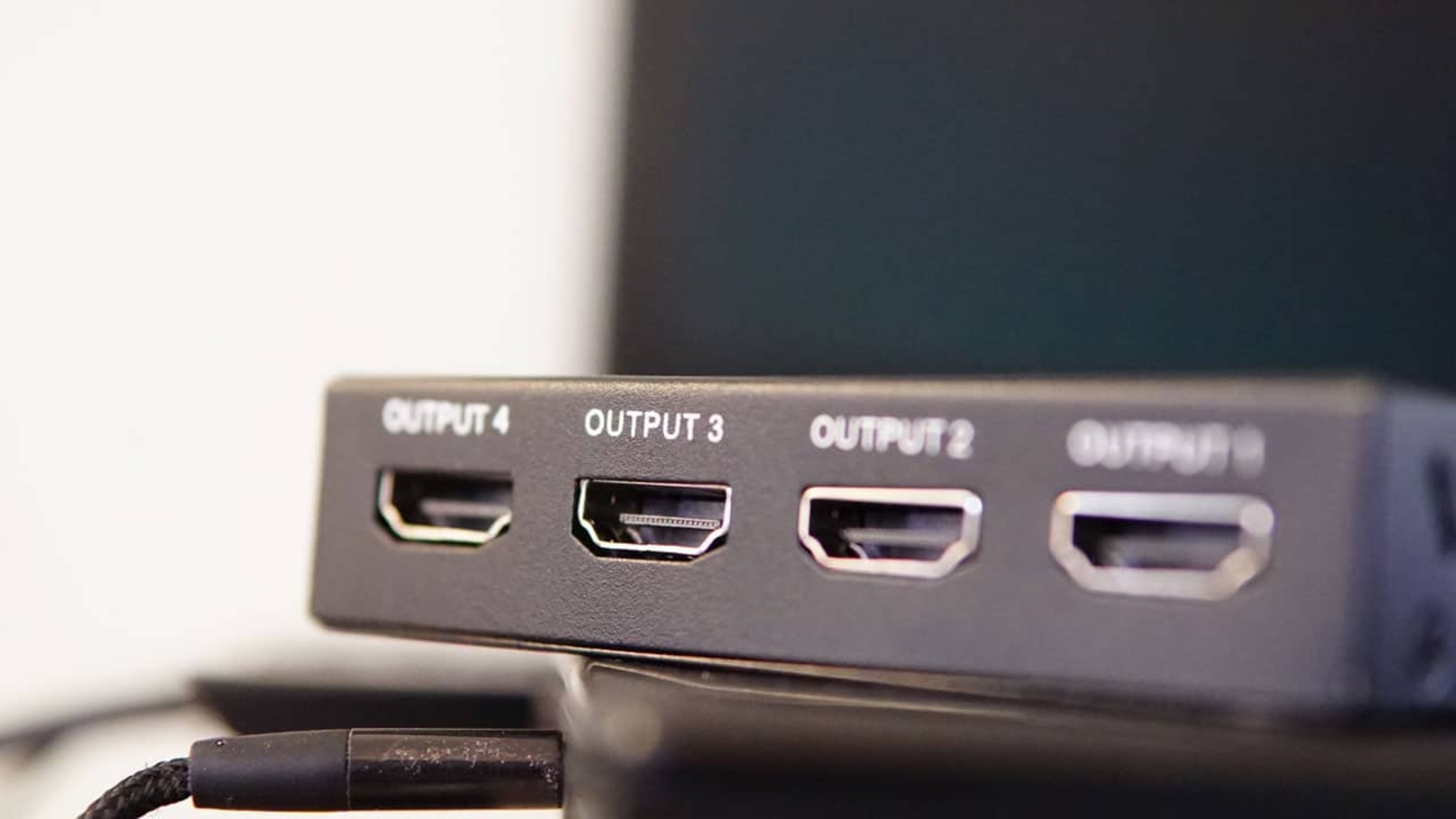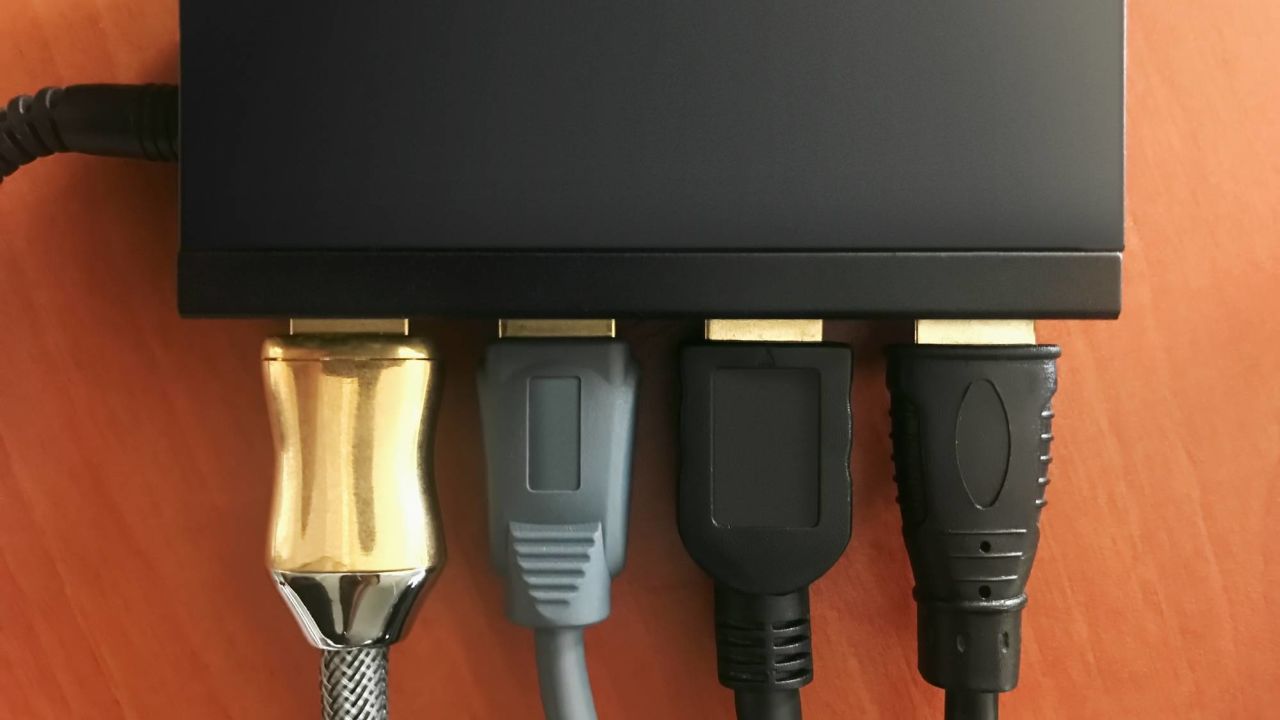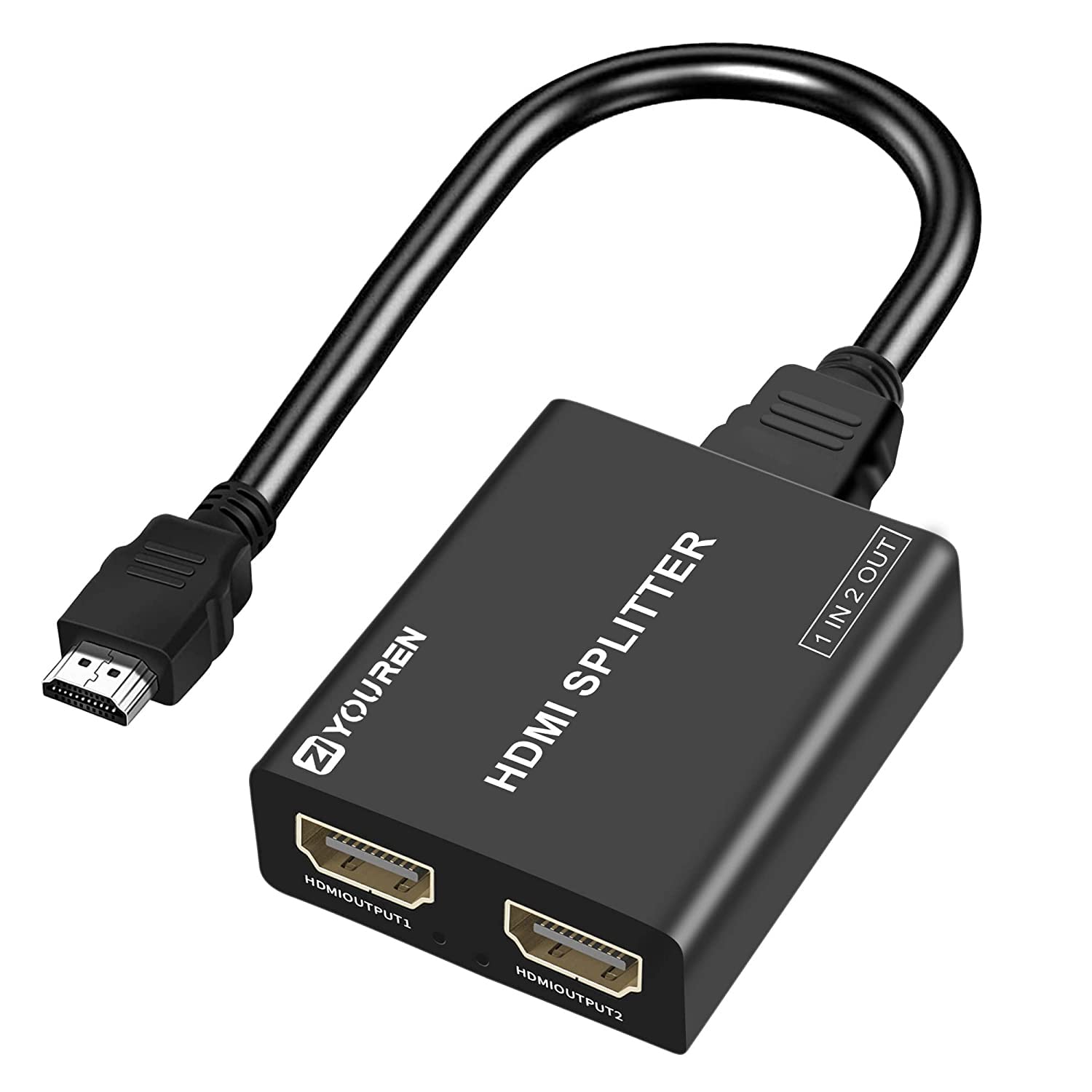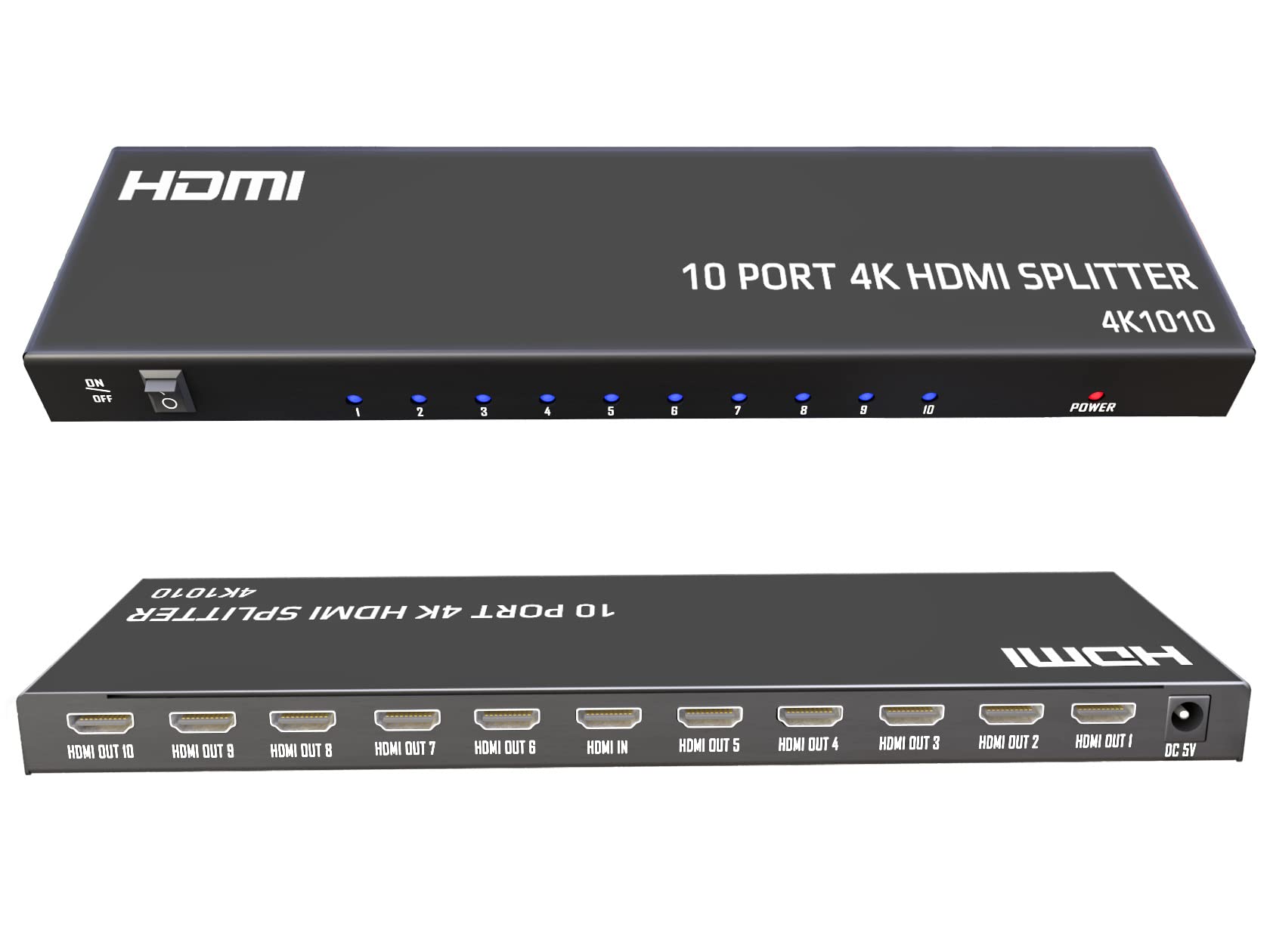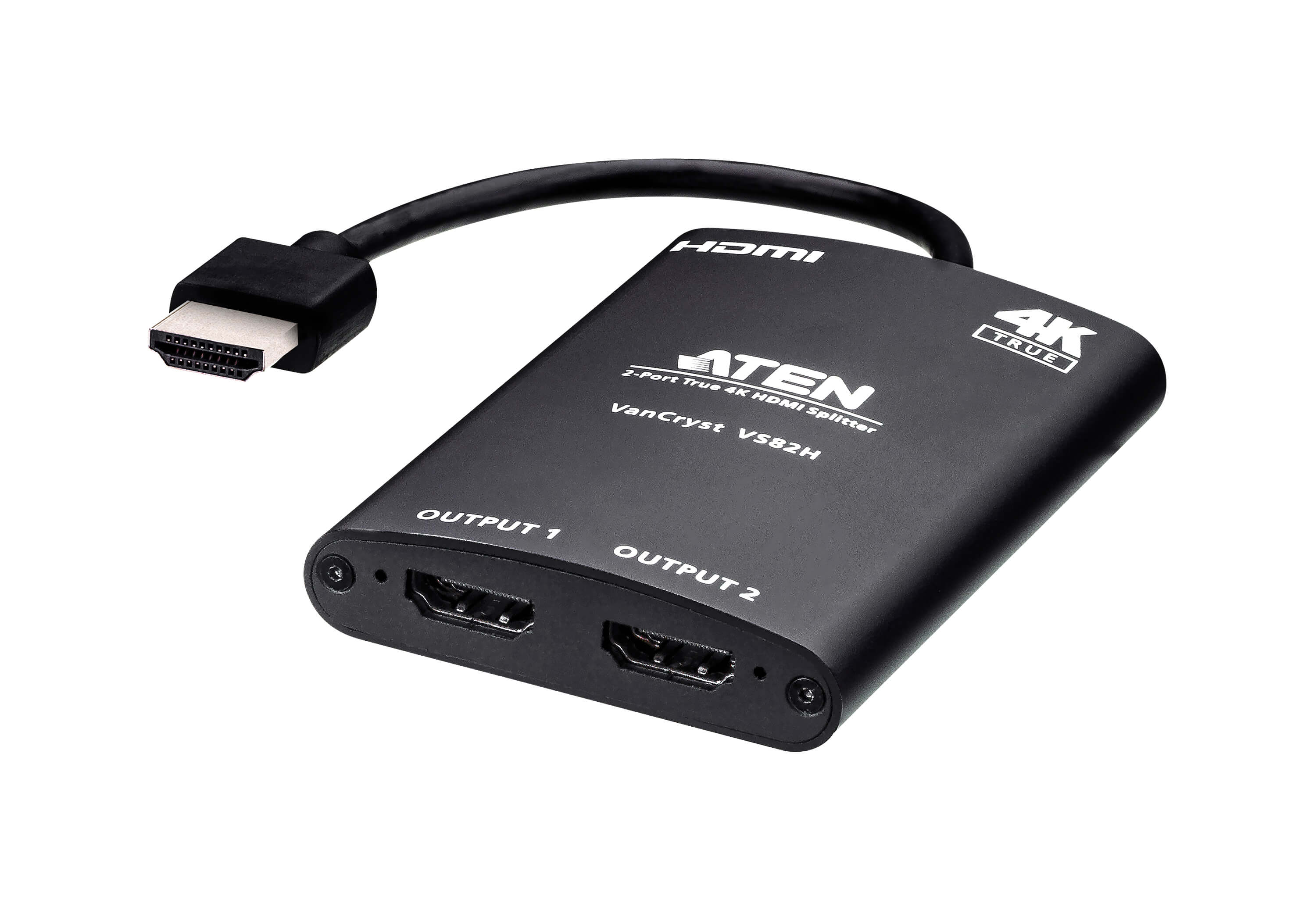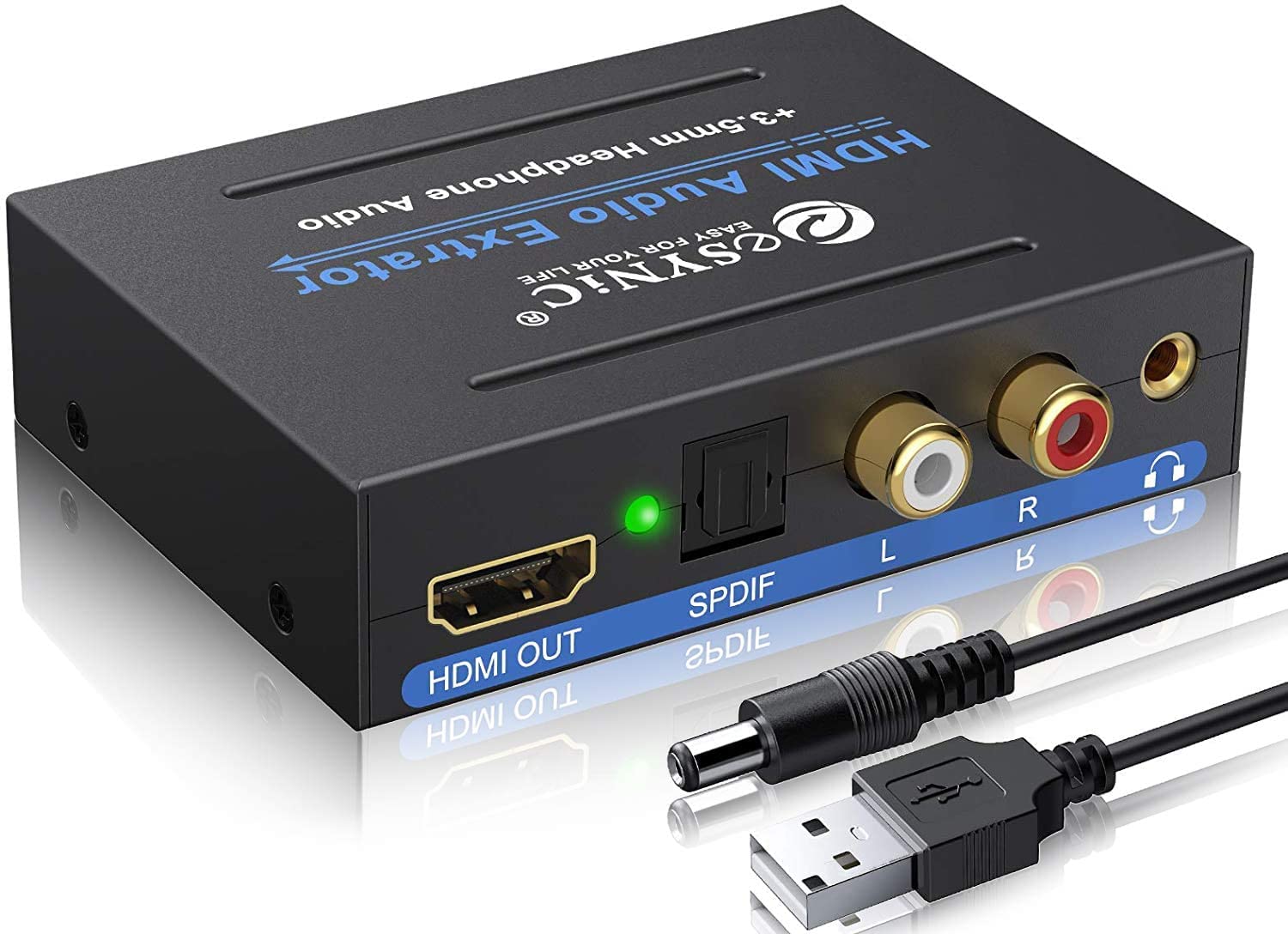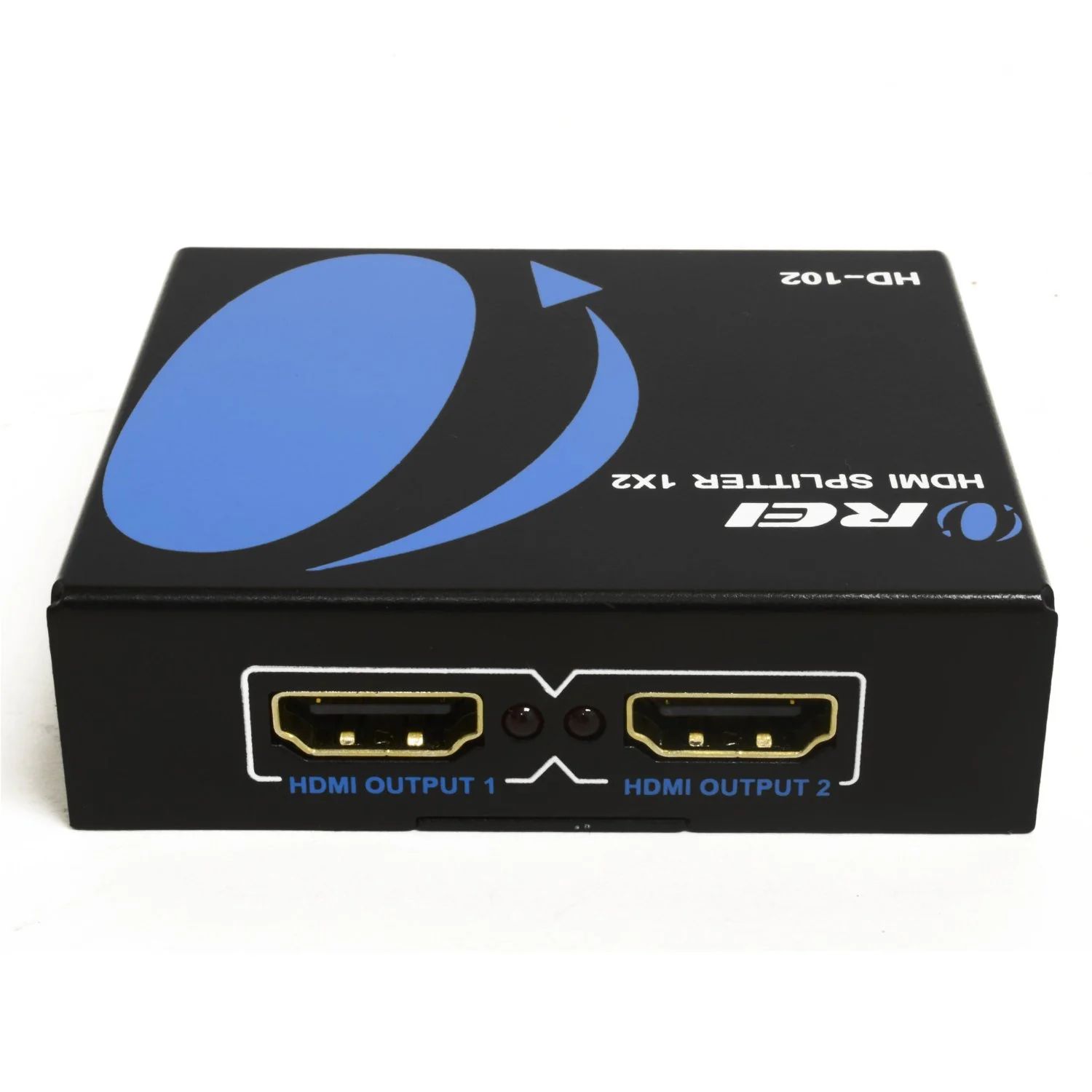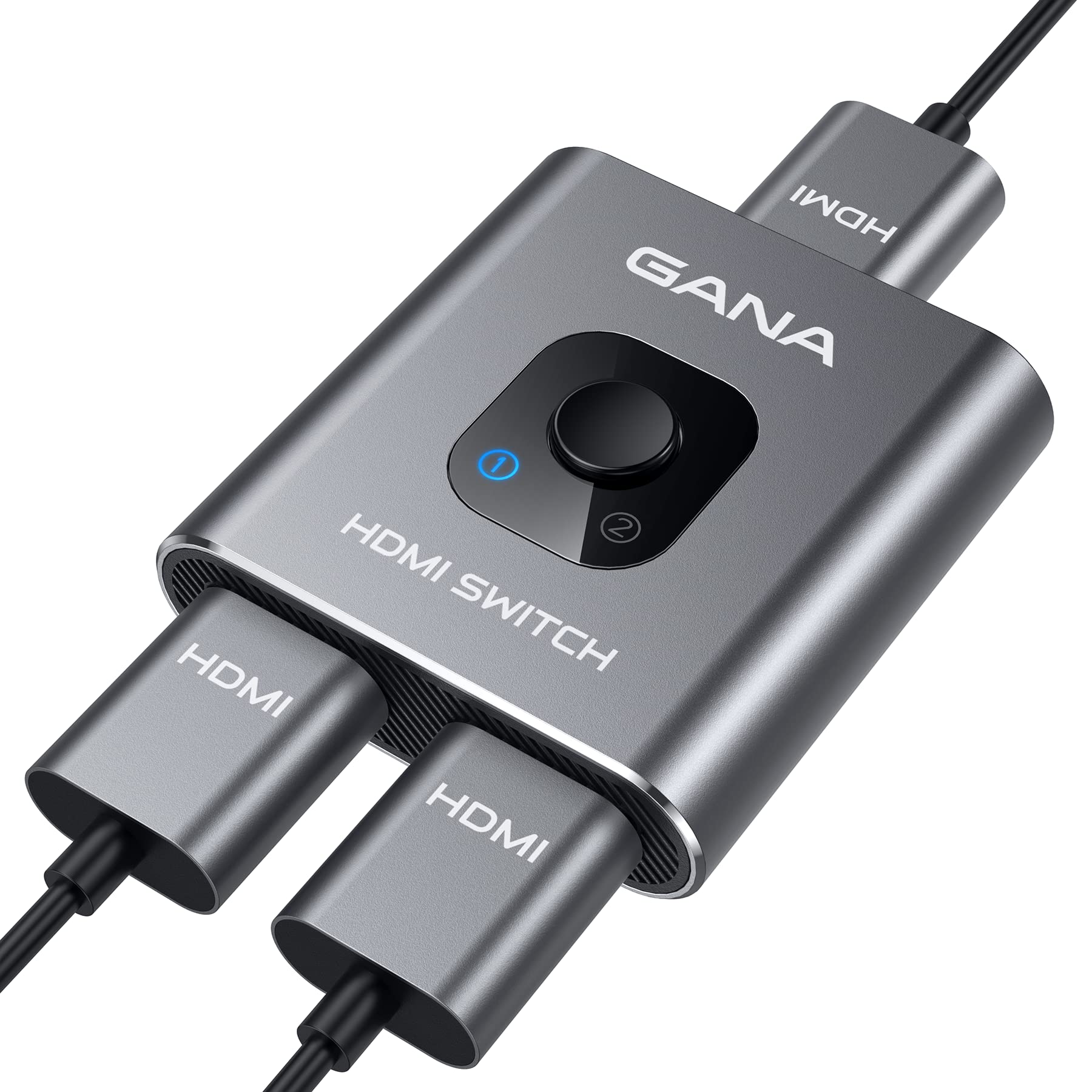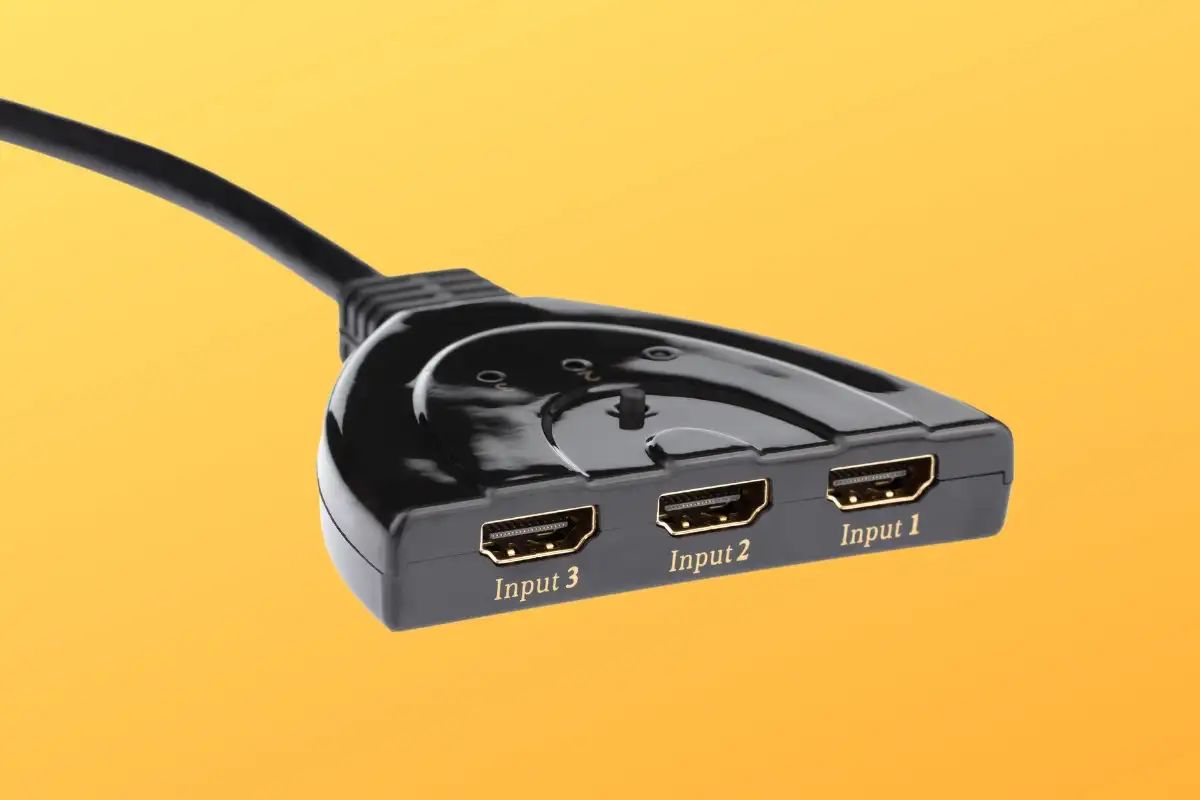Introduction
Welcome to our guide on HDMI splitters! In today’s digital age, where multimedia devices are becoming a staple in every household, it’s crucial to have a reliable and efficient means of connecting and sharing content between different devices. This is where HDMI splitters come into play. HDMI (High-Definition Multimedia Interface) splitters are versatile devices that allow you to expand the number of output displays and share high-quality audio and video signals.
Whether you’re a movie enthusiast, a gamer, or a professional working with multiple display setups, HDMI splitters offer a convenient solution to enhance your viewing and sharing experience. In this article, we’ll explore what HDMI splitters are, how they work, and the benefits they bring to your entertainment or professional setup. We’ll also discuss the different types of HDMI splitters, factors to consider when choosing one, how to set it up, and troubleshooting common issues.
As technology advances, HDMI splitters have emerged as essential tools for various applications. Whether you want to mirror your laptop screen to multiple monitors during a presentation or distribute a single video source to multiple TVs in different rooms, these devices can simplify your connectivity needs. In the following sections, we’ll delve deeper into the world of HDMI splitters and provide you with everything you need to know to make an informed decision.
What is an HDMI Splitter?
An HDMI splitter is a device that allows you to split a single HDMI signal into multiple output streams, sending the same audio and video content to multiple devices simultaneously. It essentially takes one HDMI input and replicates it across multiple HDMI outputs. This means that you can connect a single media source, such as a DVD player, gaming console, or cable box, to an HDMI splitter and then distribute the signal to multiple display devices, such as TVs, monitors, or projectors.
With an HDMI splitter, you can set up a multi-screen display or mirror the same content across several devices without any loss in quality. This can be particularly useful in various scenarios, such as home theater systems, gaming setups, conference rooms, trade shows, and digital signage installations. Instead of purchasing multiple media players or connecting devices directly to each display, an HDMI splitter simplifies the process by allowing you to connect all the devices to a single source.
Most HDMI splitters are plug-and-play devices that require minimal setup. They typically come with multiple HDMI output ports to cater to different display devices. Some models even support additional audio extraction, which means you can send the audio to a different audio system while sending the video to the display device. This flexibility makes HDMI splitters an ideal solution for situations where you want to enjoy your content on multiple screens or when you need to distribute media across various locations.
It’s important to note that an HDMI splitter differs from an HDMI switch. While both devices let you connect multiple HDMI devices, a switch allows you to select and switch between different input sources and send the chosen source to a single output device, while a splitter duplicates a single source to multiple outputs.
How does an HDMI Splitter work?
Understanding how an HDMI splitter works requires a basic knowledge of HDMI technology. HDMI is a digital interface that transmits uncompressed audio and video signals between devices. It carries both audio and video data through a single cable, eliminating the need for multiple cables and reducing clutter. HDMI splitters leverage this technology to distribute the HDMI signal to multiple displays.
When you connect an HDMI source device, such as a Blu-ray player or gaming console, to the input port of an HDMI splitter, the splitter acts as a hub, receiving the digital signals from the source. The splitter then duplicates the signal and sends it equally to all the output ports, effectively creating multiple identical streams.
Each output port of the HDMI splitter is connected to individual display devices, such as TVs or monitors, using HDMI cables. These display devices receive the replicated signals simultaneously and display the same audio and video content. This means that you can have multiple screens showing the same movie, game, or presentation without any delay or loss in quality.
HDMI splitters operate by actively amplifying and distributing the HDMI signal. They are equipped with built-in HDMI signal amplifiers that ensure the signal strength remains consistent across all the connected devices. This is especially important when dealing with long cable runs or when connecting displays that are far apart from the source.
Furthermore, some HDMI splitters support various resolutions and refresh rates, allowing you to distribute high-definition content to different displays without compromising the quality. These splitters are often labeled as “4K compatible” or “HDCP compliant,” indicating their ability to handle ultra-high-definition video formats and comply with content protection standards.
It’s worth noting that the quality of the HDMI splitter can affect the overall performance and reliability of the signal distribution. Lower-quality splitters may introduce signal degradation, leading to decreased picture quality, audio issues, or even connection dropouts. Therefore, it’s essential to choose a reputable brand and quality HDMI splitter to ensure a smooth and uninterrupted viewing experience.
Benefits of using an HDMI Splitter
Using an HDMI splitter provides several advantages that enhance your multimedia experience and simplify connectivity in various settings. Let’s explore some of the key benefits:
1. Simultaneous display on multiple devices
The main advantage of an HDMI splitter is the ability to connect a single source device and display the content simultaneously on multiple displays. Whether you want to watch a movie on two TVs in different rooms or showcase a presentation on multiple projectors, an HDMI splitter allows you to share the same content effortlessly.
2. Cost-effective solution
Instead of purchasing multiple source devices or connecting each display directly to the source, an HDMI splitter offers a cost-effective solution. By distributing the signal to multiple displays, you can save on the cost of additional media players and cables.
3. Easy setup and convenience
HDMI splitters are generally plug-and-play devices, requiring minimal setup. They eliminate the need for complex wiring and allow you to simplify your setup by connecting all the devices to a single source. This convenience is particularly beneficial in home theaters, conference rooms, or trade show setups.
4. High-quality audio and video transmission
HDMI splitters transmit audio and video signals in their full digital form, without compression or loss of quality. This ensures that you experience the content in high definition, with vibrant colors, sharp details, and immersive sound.
5. Versatility and flexibility
HDMI splitters come in various configurations, offering different numbers of output ports to accommodate your needs. Some models also come with additional features like audio extraction or support for different resolutions, providing versatility and flexibility for different applications.
6. Enhanced collaboration and productivity
In professional settings, HDMI splitters enable seamless collaboration by allowing team members to view the same content simultaneously. This is particularly useful in conference rooms, classrooms, or during presentations, where everyone can have a clear view of the content being shared.
7. Reduced cable clutter
With an HDMI splitter, you can significantly reduce cable clutter by eliminating the need for long cable runs from the source device to each display. This not only improves aesthetics but also makes troubleshooting and cable management much easier.
Overall, an HDMI splitter is a valuable tool that simplifies connectivity, enhances visual experiences, and optimizes efficiency in various multimedia setups.
Types of HDMI Splitters
There are different types of HDMI splitters available on the market, each designed to cater to specific needs and requirements. Let’s explore some of the most common types:
1. 1×2 HDMI Splitter
The 1×2 HDMI splitter is one of the most basic and popular types. It allows you to split a single HDMI input into two output ports, making it ideal for simple setups where you need to send the same signal to two display devices.
2. 1×4 HDMI Splitter
The 1×4 HDMI splitter extends the functionality of the 1×2 splitter by providing four output ports. This is useful when you need to distribute the HDMI signal to multiple displays, such as in retail stores, sports bars, or classrooms.
3. 1×8 HDMI Splitter
For larger setups, the 1×8 HDMI splitter is the perfect choice. It takes a single input and splits it into eight output ports, allowing you to connect up to eight displays simultaneously. This type of splitter is commonly used in trade show booths, conference centers, or digital signage installations.
4. Matrix HDMI Splitter
A matrix HDMI splitter is a more advanced option that gives you greater flexibility in distributing HDMI signals. With a matrix splitter, you can connect multiple input devices and multiple output devices. This allows you to route different sources to different displays or even send multiple sources to multiple displays simultaneously. Matrix splitters are commonly used in professional AV installations or advanced home theater setups.
5. Wireless HDMI Splitter
A wireless HDMI splitter eliminates the need for physical cables by transmitting the HDMI signal wirelessly to the connected displays. This type of splitter is convenient when dealing with setups where running cables is not feasible or desirable, such as in rooms with limited accessibility or in situations where aesthetic considerations are a priority.
6. Powered vs. Non-powered HDMI Splitter
Another aspect to consider is whether the HDMI splitter requires external power or can operate solely on the power received from the HDMI source device. Powered HDMI splitters typically provide greater stability and are recommended for long cable runs or setups with multiple displays, as they can maintain the signal strength. Non-powered splitters are more suitable for shorter cable runs and setups with fewer displays.
When choosing the right HDMI splitter, consider the number of displays you need to connect, the distances involved, the desired flexibility in routing signals, and any specific requirements for your setup. By selecting the appropriate type of HDMI splitter, you can ensure seamless signal distribution and an optimal viewing experience.
Factors to consider when choosing an HDMI Splitter
When selecting an HDMI splitter, there are several important factors to consider to ensure that you choose the right one for your specific needs. Let’s explore these factors:
1. Number of outputs
Determine how many display devices you want to connect to the HDMI splitter. This will help you decide the number of output ports you require. Consider both your current setup and any potential expansions you may need in the future.
2. Compatibility
Check the compatibility of the HDMI splitter with your source devices and display devices. Ensure that the splitter supports the HDMI version of your devices and the resolutions and refresh rates you require. Look for features like 4K compatibility, HDCP compliance, and support for audio formats, if necessary.
3. Signal quality and distance
If you have long cable runs or need to connect displays that are far apart from the source device, consider using a powered HDMI splitter to maintain signal quality. Look for splitters with built-in signal amplifiers to prevent degradation and ensure stable transmission.
4. Additional features
Consider any additional features that may be relevant to your setup. This could include audio extraction, 3D compatibility, EDID management, or support for HDR (High Dynamic Range) content. Choose an HDMI splitter that provides the functionality you require for your specific application.
5. Build quality and brand reputation
Investigate the build quality and reliability of the HDMI splitter. Look for reputable brands known for their quality products and positive customer reviews. A well-built HDMI splitter is less likely to cause signal loss or other technical issues, providing a more stable and consistent performance.
6. Budget
Consider your budget when choosing an HDMI splitter. While it’s important to avoid cheap, low-quality options, there are different price points available. Set a budget that aligns with your requirements and prioritize features that are essential for your specific setup.
7. Warranty and customer support
Check the warranty period offered by the manufacturer and the availability of customer support. A reliable warranty and accessible customer support can provide peace of mind and assistance in case any issues arise with the HDMI splitter.
By considering these factors, you can choose an HDMI splitter that meets your requirements, provides a reliable signal distribution, and enhances your multimedia experience.
How to set up an HDMI Splitter
Setting up an HDMI splitter is a straightforward process that typically involves a few simple steps. Here’s a general guide on how to set up an HDMI splitter:
1. Gather the necessary equipment
Ensure that you have all the required equipment for the setup, including the HDMI splitter, HDMI cables, and the source device (such as a Blu-ray player or gaming console) and the display devices (such as TVs or monitors) that you want to connect.
2. Determine the configuration
Decide on the configuration you want for your setup. Determine the number of displays you want to connect and where you want to place them. This will help you determine the length of HDMI cables you need and the positioning of the splitter.
3. Connect the HDMI cables
Connect one end of an HDMI cable to the HDMI output port on your source device (e.g., Blu-ray player) and the other end to the HDMI input port on the HDMI splitter. Ensure that the connections are secure and properly seated.
4. Connect the display devices
Take HDMI cables and connect them from the HDMI output ports on the HDMI splitter to the HDMI input ports on the display devices (e.g., TVs or monitors). Make sure the connections are secure and properly inserted.
5. Power on the devices
Power on the source device (e.g., Blu-ray player) and the display devices (e.g., TVs or monitors) that are connected to the HDMI splitter. Check that all devices are receiving power and are turned on.
6. Test the setup
Verify that the HDMI splitter is working correctly by selecting the appropriate input on your display devices. Depending on the HDMI splitter, you may need to use a remote control or buttons on the splitter itself to make the selection. Once selected, you should see the content from the source device displayed on all the connected displays.
7. Adjust settings if necessary
If you encounter any issues, such as a distorted image or no signal, double-check the HDMI connections and ensure that all devices are set to the correct input source. Adjust display settings and configurations on your source device if necessary.
Keep in mind that these steps are a general guideline, and the setup process may vary slightly depending on the specific HDMI splitter and devices you are using. It’s always a good idea to consult the user manual provided with your HDMI splitter for detailed instructions tailored to your specific model.
By following these steps, you should be able to set up your HDMI splitter and enjoy the convenience of sharing the same audio and video content across multiple displays.
Troubleshooting common issues with HDMI Splitters
While HDMI splitters generally provide a seamless experience, there are a few common issues that can arise. Here are some troubleshooting tips for addressing these issues:
1. No signal or distorted image
If you’re not getting a signal or experiencing a distorted image on any of the connected displays, check the HDMI connections. Ensure that all HDMI cables are securely plugged into the correct ports on both the HDMI splitter and the display devices. Also, verify that the source device is set to the correct output resolution and refresh rate for your displays.
2. Uneven distribution of signal
If you notice that the signal is not distributed evenly among the connected displays, make sure that the HDMI splitter is powered on and functioning correctly. If the splitter requires external power, ensure that it is connected and receiving power. Additionally, check that the cables used for connection are of high-quality and capable of carrying the signal to all the displays without degradation.
3. Audio issues
If you’re experiencing audio problems, such as no sound or distorted sound, verify that the audio settings on your source device are properly configured. Ensure that the audio output is set to HDMI and not another audio output option. You can also try connecting the audio output directly to an audio system to see if the problem lies with the HDMI splitter or the audio system.
4. HDCP errors
If you encounter HDCP (High-bandwidth Digital Content Protection) errors when connecting your HDMI splitter, it may indicate an issue with the compatibility of your devices. Check that all devices, including the source device and display devices, are HDCP compliant. If not, you may need to replace non-compliant devices or use an HDCP converter to resolve this issue.
5. Firmware updates
Occasionally, HDMI splitters may require firmware updates to fix bugs, improve compatibility, or add new features. Check the manufacturer’s website for any available firmware updates for your HDMI splitter and follow the instructions provided to update its firmware, if necessary.
6. Cable length limitations
Long HDMI cable runs can sometimes result in signal loss or degradation. If you have long cable runs between the HDMI splitter and the display devices, consider using high-quality HDMI cables specifically designed for longer distances. Additionally, using a powered HDMI splitter with built-in signal amplifiers can help maintain signal integrity over longer cable runs.
7. Device compatibility and troubleshooting
If you’ve exhausted all other options and are still experiencing issues, consider testing the HDMI splitter with different source devices and display devices to determine if the problem lies with a specific device. Consult the user manual for your HDMI splitter or contact the manufacturer’s customer support for further troubleshooting assistance.
By following these troubleshooting steps, you can address common issues that may arise when using an HDMI splitter and ensure a seamless audio and video experience across all your connected displays.
Conclusion
In conclusion, HDMI splitters are versatile devices that allow you to share audio and video content from a single source to multiple displays simultaneously. Whether you’re a home theater enthusiast, a gamer, or a professional in need of effective display solutions, HDMI splitters can significantly enhance your multimedia experience and simplify connectivity.
By understanding how HDMI splitters work and considering factors such as the number of outputs, compatibility, signal quality, and additional features, you can choose the right HDMI splitter that meets your specific needs. Setting up an HDMI splitter is generally a straightforward process, involving connecting your source device to the input of the splitter and connecting your display devices to the output ports.
However, in the event of common issues, such as no signal, distorted image or audio, HDCP errors, or cable limitations, troubleshooting steps can be taken to identify and resolve the problem. Checking HDMI connections, adjusting settings, updating firmware, and ensuring device compatibility are some of the actions that can help troubleshoot and address these issues.
Remember to consider the reputation of the brand, the build quality of the HDMI splitter, and the availability of customer support when making a purchase decision. Investing in a reliable and high-quality HDMI splitter ensures a stable and consistent performance.
Overall, HDMI splitters serve as essential tools to expand your connectivity options, enhance collaboration, and optimize the way you share and enjoy audio and video content on multiple displays. By harnessing the power of HDMI technology, these devices provide a seamless and immersive multimedia experience for both personal and professional applications.







